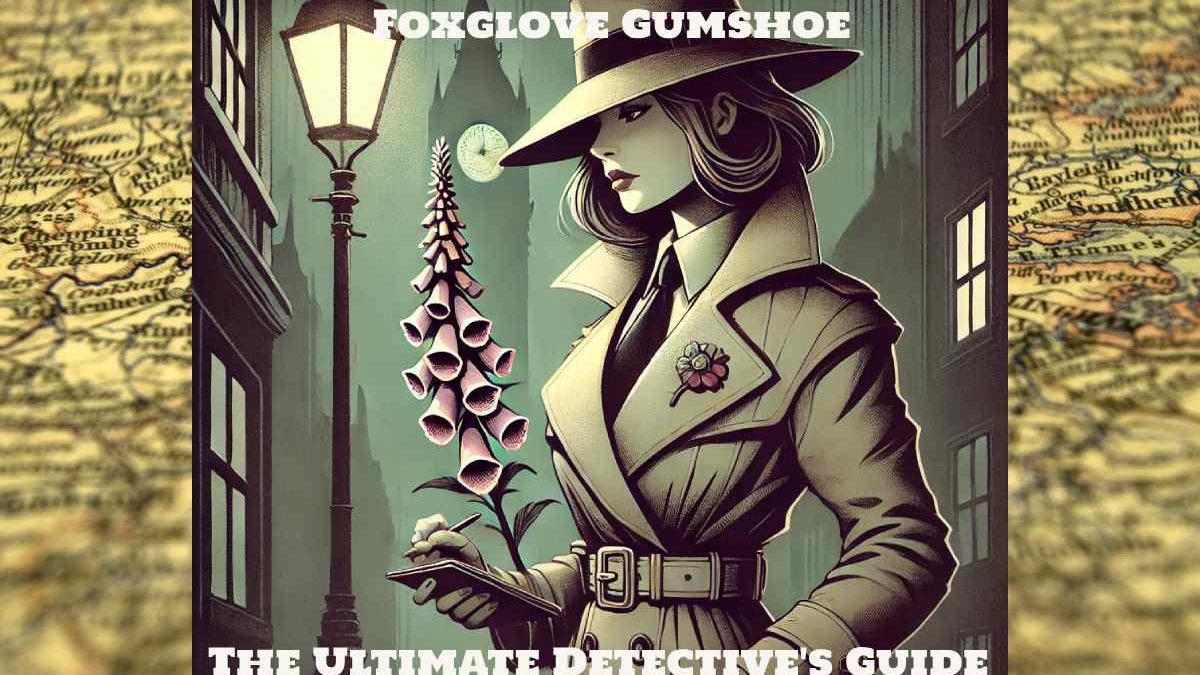The name Foxglove Gumshoe invokes the images of a private eye solving the toughest cases by using insight from humanity’s immediate chaos and the intricacies of the natural order. The enthralling nature of this sleuthing archetype blended with the charisma of flora, the subject of foxglove, a gorgeous poisonous flower. This article examines where the “Foxglove Gumshoe” concept comes from, why it resonates, and how it is recognized and employed today, representing a uniquely fascinating type of “sleuth.”
Table of Contents
Origin of Foxglove Gumshoe
“Foxglove Gumshoe” marries such disparate elements, both thematically on point: the foxglove plant and the gumshoe detective. It is undoubtedly one of the most beautiful flowers, sporting large purple-pink flowers and containing lethal poisons that can interfere with the heart, making it one of the most dangerous plants in botany. The gumshoe detective, a slang term that emerged at the turn of the 20th century, symbolized the down-and-dirty, streetwise investigator plodding through the underbelly of culture with a combat mentality.
In crime fiction, foxglove’s beauty and danger are the perfect mystery plot poison. The gumshoe: unrefined sense, honed by street knowledge and an intimate understanding of the nature of man, that uses an acute perception and hard-nosed determination in the hunt of the case, sometimes involving murder by poison. Foxglove and gumshoe form a character type that feeds on intrigue, peril, and the mind games of fierce competition.
Foxglove Gumshoe in Crime Fiction
Due to its toxicity, foxglove has found its way into literature as a means of balancing the beauty of the plant with things like poisonous remedies and delicious poisons, and the plant brings an air of botanical intrigue to a story. This toxic flower is known to be always the murderer’s number one choice of flower since it provides both suspense and a fancy kick to crime stories. The foxglove gumshoe detective has a sound knowledge of plants and poisons and frequently draws on their knowledge of botany to solve the mystery.
Famous Examples in Literature and Film

Many crime novels And film dramas have riffed on the foxglove gumshoe trope, portraying detectives who leverage the ways of toxic flora to unravel murder mysteries. Foxglove still delights and symbolizes contemporary mystery novels, reminding readers that beauty can conceal deadly intentions, much like criminals hide their true motives behind a mask.
Allure of the Foxglove Gumshoe
Why does the foxglove gumshoe archetype hold such sway over readers and audiences? The dichotomy, hence the answer, involves both the flower and the investigator.
Foxglove: Beauty with a Deadly Secret
The foxglove looks so innocent, yet it is one of the most poisonous plants around a mystery where beauty hides a dark secret. The “wolf in sheep’s clothing” effect is reminiscent of the criminal, who may disguise their true character beneath a veneer of respectability.
Gumshoe Detective: The Shadowy Protector
The grizzled prepared gumshoe, resilient detective, befit a dichotomy of strength and intelligence. The story is about a man who possesses some street smarts combined with an ethical gray zone, allowing him to explore the sordid underbelly of the city but remain a champion of rights. These elements, when infused in the foxglove gumshoe, result in a detective who knows nature’s secrets as well as they know human behavior.
Bringing the Foxglove Gumshoe Archetype to Life
A foxglove gumshoe could add layers to your story both for readers and for other writers as well. Here are a couple of crucial elements:
* Specialized Knowledge: Make the detective a botanist or chemist, or give him an in-depth understanding of toxic plants, such as foxglove.
* Character: The word Gritty must be bolded as if they are an eccentrically smart character who can formulate what seems to be an entire dictionary of granite; between their refined understanding of nature and gritty character, they can wander from a dumpster alley to a forest floor haphazardly.
* Grow Suspense: Introduce the foxglove as a thing Heroes use. Readers need to be distracted; however, little hints of things like pollen traces or floral patterns will create a sense of uncertainty but will not be too revealing too soon.
* Deep Moral Compass: While the foxglove gumshoe is often morally flexible, they should be motivated by a fierce sense of justice that will lead them into morally gray territory to get to the truth.
Modern Applications: The Foxglove Gumshoe Today
Besides fiction, the archetype of the foxglove gumshoe has also made its presence felt in modern fields:
* Botanical Forensics: Specialists in plant toxins and eco-crimes are the foxglove gumshoes at the intersection of botany and criminal investigation.
* Eco-crime Detectives: In real-life environmental investigations, scientists examine plant poisons and track ecological footprints to help solve eco-crimes by combining scientific knowledge with investigative techniques.
* Digital Detectives: Environmental science overlaps with digital crime, so perhaps the modern-day “foxglove gumshoes” will use technology to track plant-based crimes in the virtual world.
Writing Your Own Foxglove Gumshoe Story
The success of a foxglove gumshoe rests on solid world-building and fully realized characters. Here are some tips to help:
* Show, Don’t Tell: Rely on plant and urban scenes and subtly pay attention to the botanical aspect of the foxglove theme.
* Create a Building Tension: Let the audience suspect something is amiss but never fully confirm it. Plant clues, but plant them sparingly to give readers the impression they are the gumshoe solving the case.
*Multi-layered Characters: Make Your Gumshoe a Character of Contrasts: A gumshoe that knows all about poisonous plants but is street-smart, an intellectual who seems in their element in the rough-and-tumble world of detectives.
Future of the Foxglove Gumshoe Genre

As detective fiction continues evolving, so does the foxglove gumshoe archetype. The current interest in eco-thrillers and scientific mysteries opens doors for a resurgence in this genre. Readers’ fascination with the natural world and criminal intrigue makes this archetype a natural fit for contemporary detective fiction.
Conclusion
Hedy is just a foxglove gumshoe detective, a poisoner if you will, the wrong side of the tracks with an air of perfume blooms and a wone of danger. Still, she’s also on the right side of the street with the mingled scent of mystery, intellect, fast shoes, and could-just-as-easily-cut-you-but-wonders-why aroma. Be it in a novel, a movie, or a non-fiction account of a botanist’s life, the allure of this detective archetype is its amalgamation of natural history and all the complexities of human life. With the increasing popularity of botanical and eco-focused mysteries, the journey of the foxglove gumshoe is just beginning.
The foxglove gumshoe remains a singular and inspirational figure for writers, researchers and readers alike, a reminder, perhaps, that some of the deadliest mysteries grow in our backyards.

